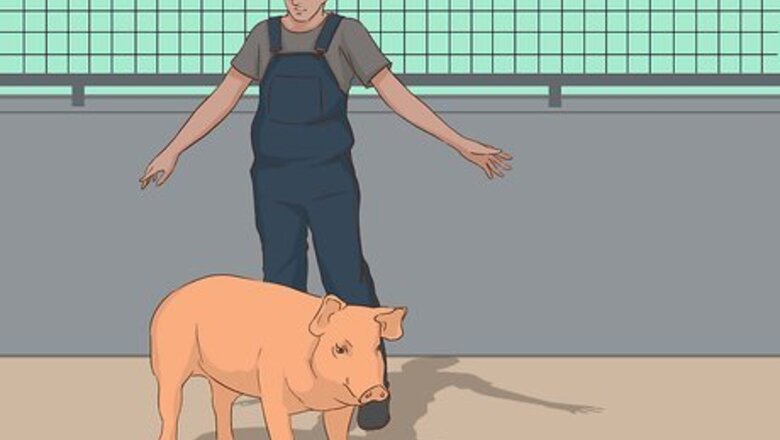
views
Securing the Area
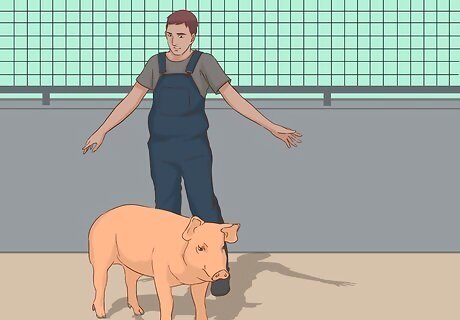
Encourage the pig to move forward. Unless the pig is already in a secure location, you will likely to need to move it. Get the pig to move by encouraging it with your voice. Do not kick or hit the pig with a stick or prod. This could injure the pig. You can also use a pig board to encourage the pig to move forward.
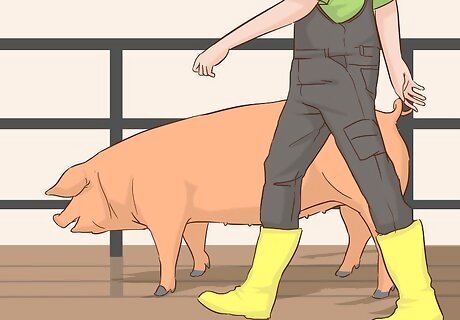
Allow the pig to walk at its own pace. You can encourage the pig to move to the space where it will be hogtied, but you should not force it to walk any faster or slower than it wants to. Let it move at its own pace. Keep a calm and unhurried manner to avoid scaring the pig.
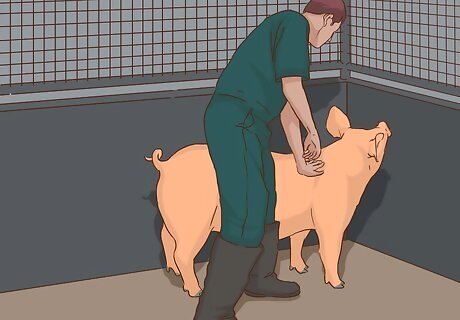
Choose an area where the pig can’t move forward. The area should be large enough to tie the pig safely, but small enough to restrict too much movement. The end of a passageway is ideal because it prevents the pig from moving forward. A pig can be hogtied in a large, outdoor space, but this would make it too easy for the pig to escape. Position yourself behind or beside the pig as you urge it forward. You can also have someone position themselves in front of the pig if you’re worried about it running off.
Restraining the Pig
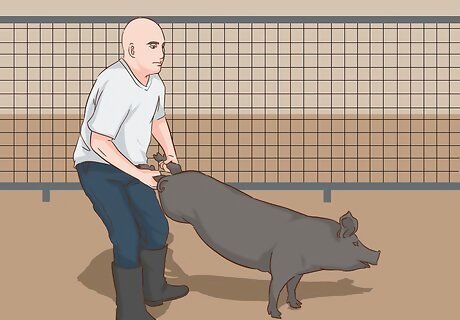
Hold the pig by its back legs. Once the pig is in a secure location, pick up its back legs. Expect some resistance as you do this. The pig may try to kick, so try to keep your body as far away as possible while you hold it. Do not, however, hold on to or pull the pig’s legs so hard that you hurt it.
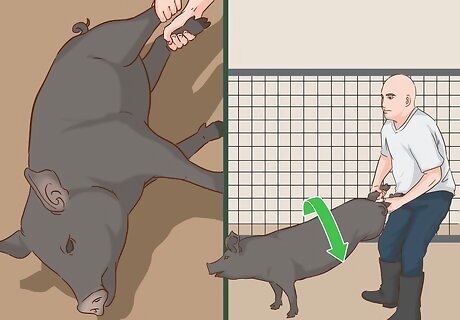
Turn the pig on its side. Gently and quickly move your hands from the pig’s back legs to turn it on is side. Do not be too forceful in order to avoid injuring the pig. All four of its legs will need to be tied, so it is necessary for the pig to be in this position. It’s easier to have someone helping you as you do this.
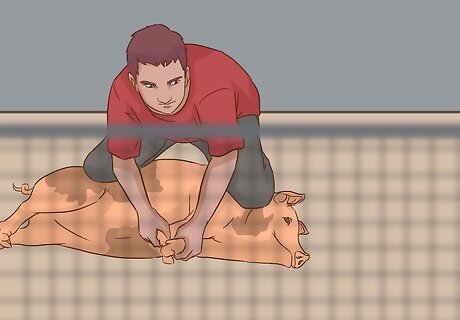
Apply gentle pressure to the pig to keep it from moving too much. You can use your leg to hold the pig in position as you reach for its feet. If that doesn’t work, consider using a pig board to restrain it. Ease pressure off of the pig if it is squealing in pain.
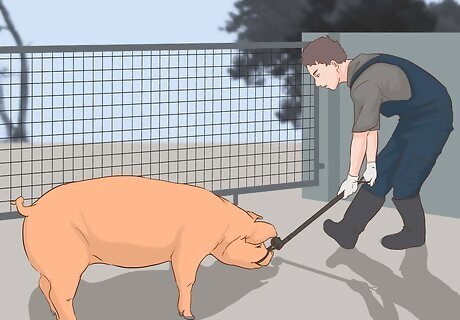
Use a restraining snare if necessary. A restraining snare keeps the pig from moving and should only be used if absolutely necessary. To use a restraining snare, place the loop over the top jaw and snout. Hold the snare vertically, move the loop back, and then tighten the snare. Use the restraining snare for as little time as possible.
Tying the Pig
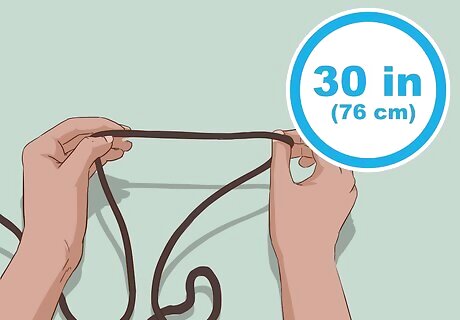
Use a 30 in (76 cm) rope to hogtie the pig. Make sure the rope isn’t very thin, as a thin rope could cut into the pig’s ankles. This rope should already be in your hands or near you because you will not be able to retrieve it while the pig is being restrained unless you have help.
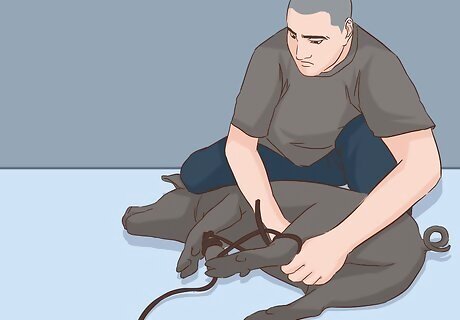
Tie the rope around the pig’s four ankles. Start with any ankle and loop it around several times. Then, pull the rope under the loops and through. Move on to the next ankle and repeat the process until all four ankles have been secured with the same rope. Make sure the rope has been pulled tight so that all four ankles are pulled together. It is ideal to have someone help you during the hogtying process, as it is difficult to restrain and tie the pig at the time.
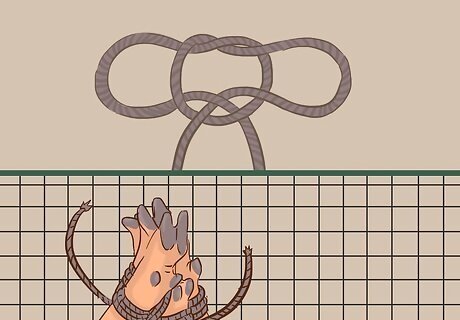
Create a square knot to secure the hogtie. Once all four ankles have been tied, hold both free ends of the rope vertically. Cross the left side of the rope over the right side and pull it back and through. Then, cross the right side of the rope behind the left side. Loop it under and through the left side. Pull on both sides of the rope to tighten the knot.
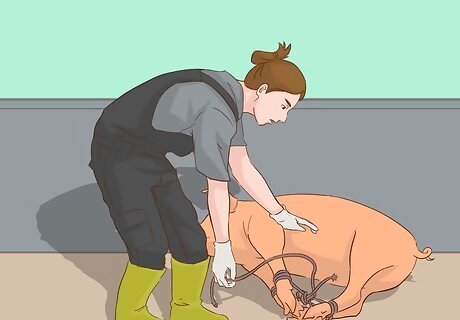
Check to make sure the hogtie isn’t too loose or tight. Back away from the pig for a moment to make sure that it can’t escape from the hogtie. Look at the pig’s ankles to see if the rope appears too tight or too loose. If you see a problem with the way it has been tied, approach the pig carefully and retie the knot or redo the hogtie altogether.



















Comments
0 comment